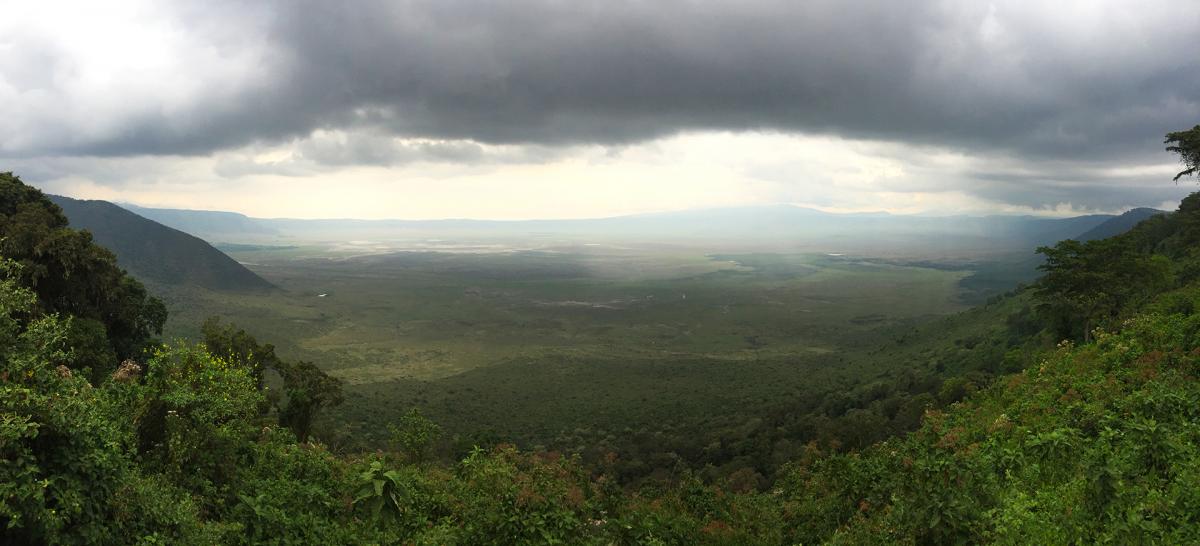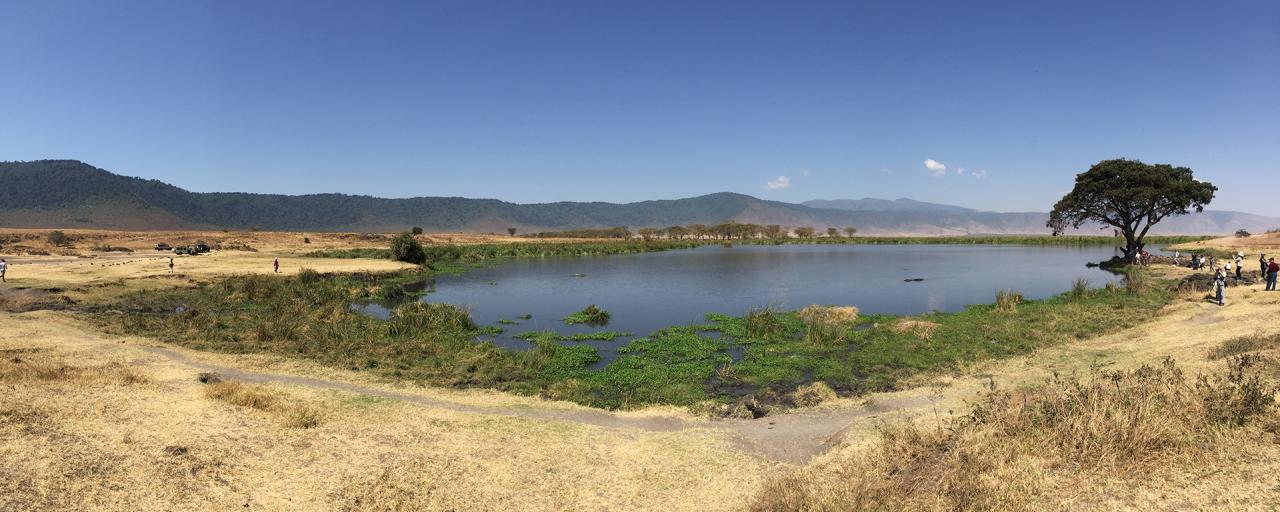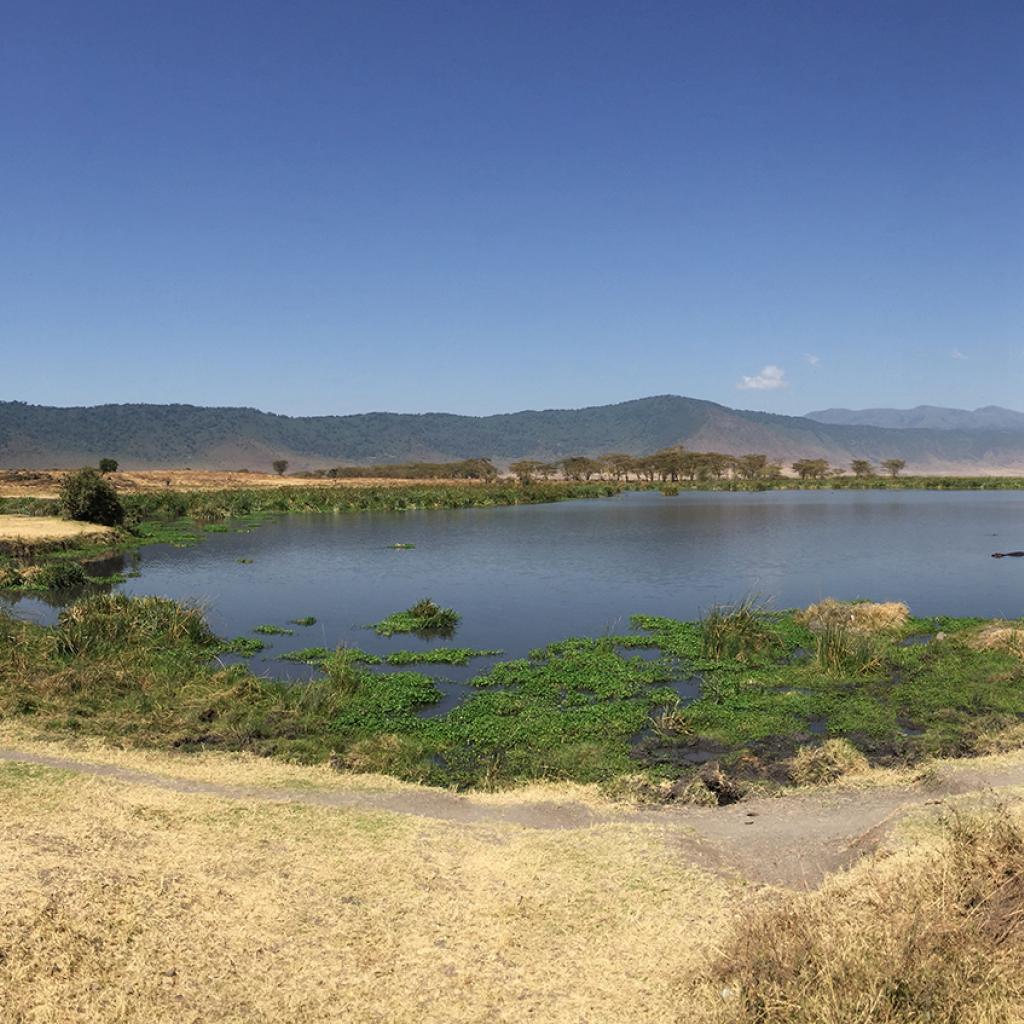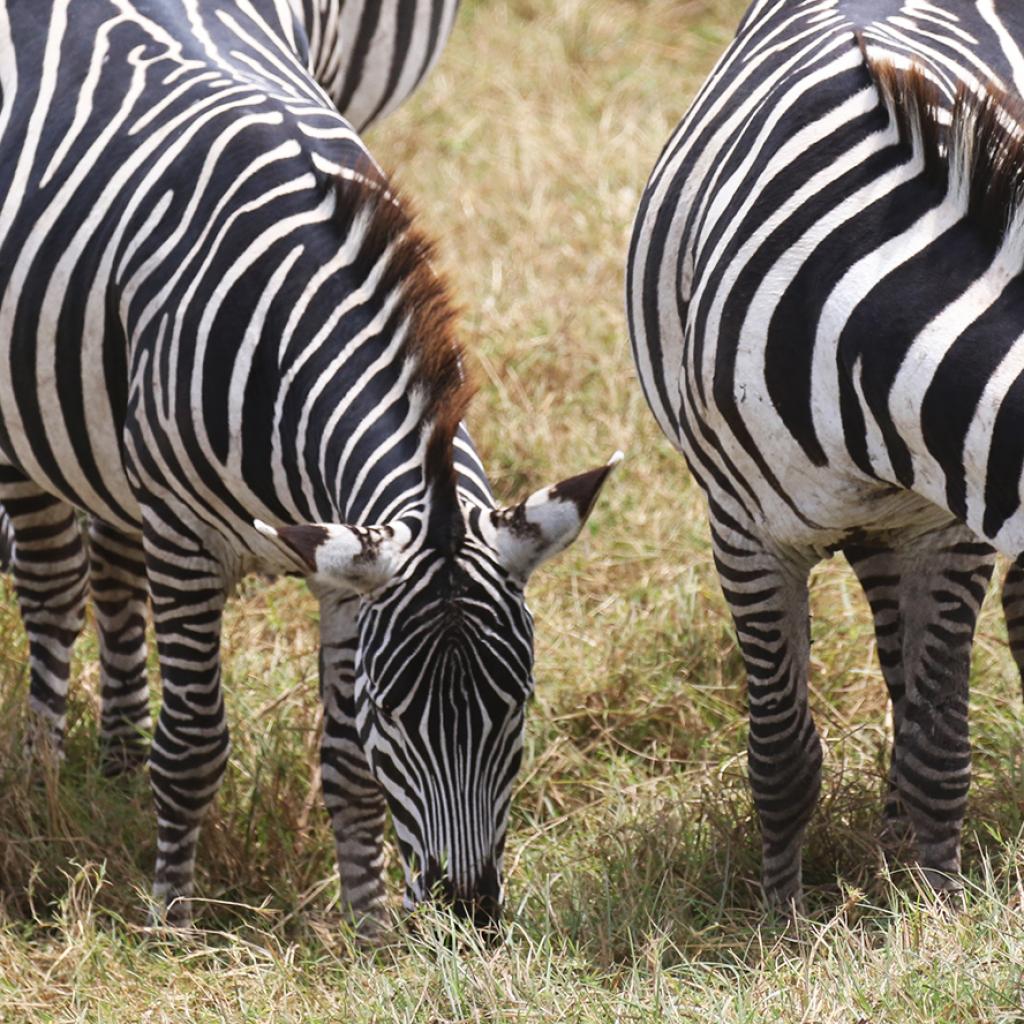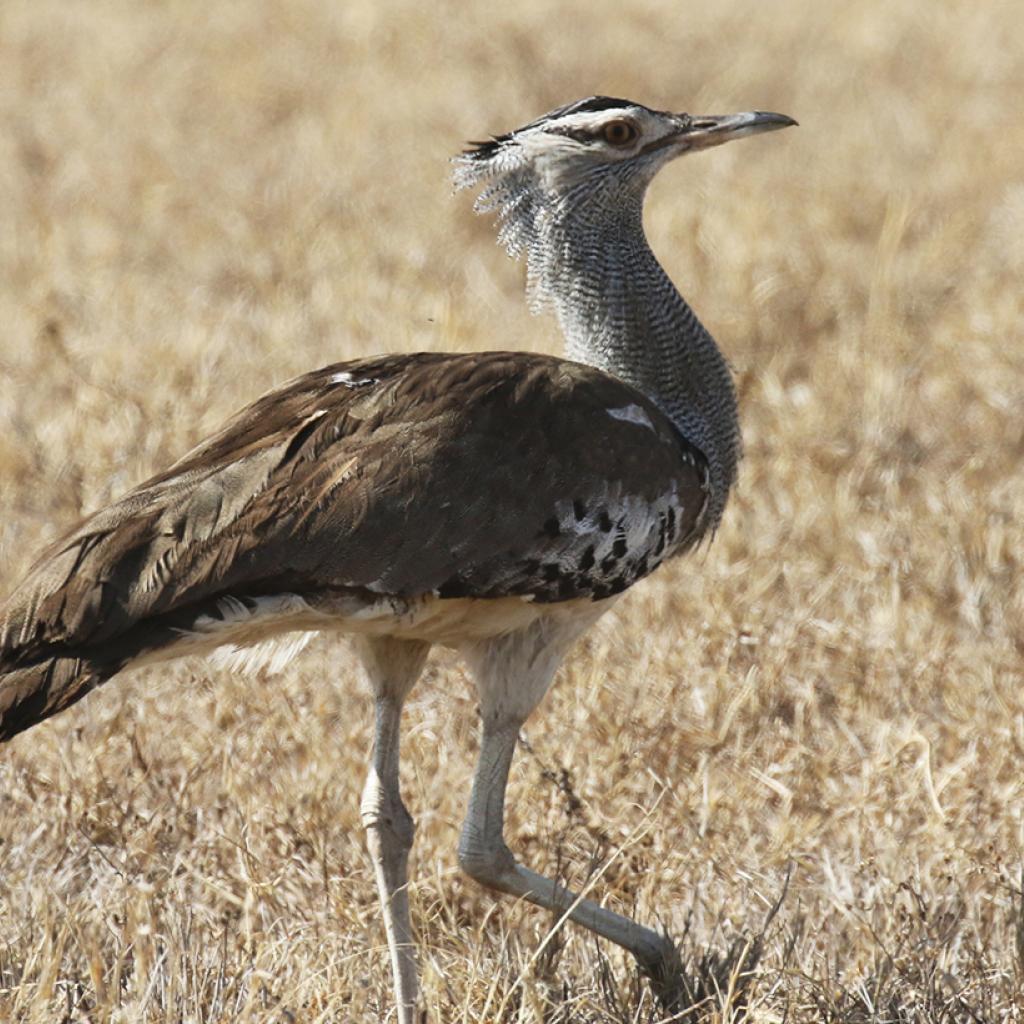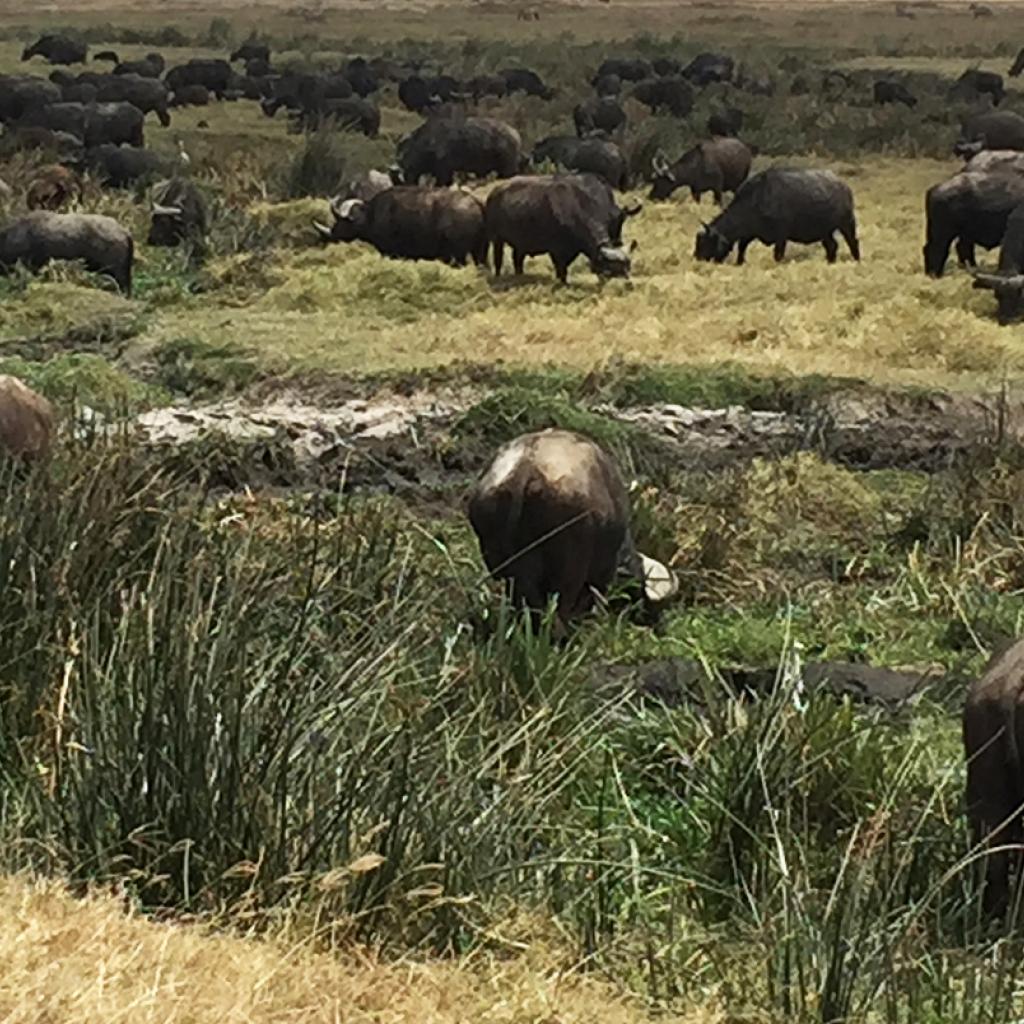Ngorongoro Conservation Area was declared a World Heritage site by UNESCO in 1979 because of its beauty and the uniqueness of its ecosystem.
The Ngorongoro Crater, that was declared a World Heritage site by UNESCO in 1979, is the most known and visited zone of the entire Ngorongoro Conservation Area and is also the most scenic part with the highest concentration of animals throughout the African continent; it is also the only place in Tanzania where you can easily spot the Big 5.
It is actually a large non-flooded caldera that was formed some 3 million years ago following the collapse of a volcano, that is estimated to have been as high as 4,500-5,800 metres.
The crater is 2,200 metres a.s.l. and measures 19 km in width, 16 km in length and 610 metres in depth, while the surface area of the bottom is 265 km2; the slopes are intact and are covered with a dense forest up to an altitude of 3,200 metres a.s.l.
It is the world’s largest caldera with intact sides and non-flooded bottom, a true splendour from a geological point of view.
The micro-climate created inside it and its isolation contribute to form a unique habitat and the animals live here as in a small heaven on earth; the soil is very rich in mineral salts that favour the growth of highly nourishing herbs.
Heavy rainfalls contribute to the formation of small ponds, marshes and water streams that feed the waters of the Magadi Lake at the bottom; the rim of the crater is often enveloped in the fog that forms as a result of temperature difference between the bottom and rim of the crater and the surrounding highlands.
The rain and fog have contributed to the formation of a unique micro-climate on the slopes and inside the caldera.
A dense forest grows on the inner and outer slopes of the crater thanks to moisture-laden fog that has created the ideal climate; fog is the result of evapotranspiration from plants in the forest.
The savannah occupies the inner part of the crater, where small marshes give way to yellow acacia thickets, low and tall grass prairies and semi-desert open spaces; the Magadi Lake, at the bottom of the crater, with its shallow salty waters, is home to numerous animals, including colonies of greater and lesser flamingos who generally live on the edges of salty lakes.
In the South-West corner, to the South of the Magadi Lake, there is the Lerai forest, consisting mostly of yellow acacias, while to the East there are the Gorigor Swamp and the Ngoitokitok Springs with their hippo pools; the Northern part of the crater is more arid and is covered with grasslands, here is where most of the animals can be spotted.
The crater is home to an exceptional concentration of fauna, one of the highest in the African continent; it is estimated that nearly 25,000 big animals live there, including numerous herbivorous, such as huge herds of wildebeests and zebras, buffalos, Thompson gazelles, hartebeests, baboons, hippos and black rhinos; this is the only place in Tanzania where you can spot them, thanks to the reduced surface area and the bare landscape of the bottom of the crater; the black rhino also lives in the Serengeti National Park, but it is very difficult to spot it because of the vastness of the area, that is protected and where vehicles cannot move freely.
There is no lack of predators, of course, namely lions, spotted hyenas, cheetahs, black backed jackals, golden jackals, caracals, bat-eared foxes and servals.
This area boasts the highest number of lions of all Africa; it is not difficult to spot them in the open spaces at the bottom of the crater as these big cats are accustomed to the presence of off-road vehicles and often use them to hide during their chase and when making ambushes to their prey or to find a shelter from the midday hot sun.
There are also elephants and leopards, who prefer to remain in the forest on the slopes or in the Lerai Forest at the bottom of the crater; elephants, that can also be spotted at the Gorigor Marsh, are in a limited number compared to those living in other parks and reserves, but here you can spot specimens of Big Tusker who, unlike in other places, have been preserved and saved from poachers.
Thanks to the diversified habitat, about 400 species of birds can be found here; they include water birds, such as storks, herons and cranes, savannah birds such as ostrich and Kori bustards, and forest birds such as turacos and hornbills; not to mention birds of prey, such as eagles and vultures.
Giraffes and impalas are absent probably because of the lack of bushes, which are the favourite habitat and nourishment of these species.
The Lodoare Gate main entrance can be reached from the road coming from Karatu and Arusha; beyond the gate the road climbs on the caldera wall, through a dense forest of tall trees, often covered with moss and woody vines dandling across the branches.
At the top of the crater there is a terrace offering one of the most beautiful panoramas and breathtaking views that give the feeling of being in a primordial world; the road continues Southwards along the crown of the crater and links to the lodges and the camp situated on the rim, and from there down towards the Southern highlands.
This main road is linked to two secondary roads leading inside the caldera: the one-way down Seneto Road and the one-way up Lerai Road; there is another two-way access route to the crater on the Eastern side, the Lemala or Sopa Road, linking the Ngorongoro Crater to the Eastern highlands.
Inside the crater only game drive safari is allowed, no walking safari or other activities then; you are not allowed to get out of off-road jeeps, except in the vicinity of the two picnic areas.
There is no recommended period to visit the crater because the animals do not leave the caldera and they can be spotted at any time of the year.
Because of its unique features, the Nrorongoro Crater is very popular among visitors and in the vicinity of major sightings or the picnic areas it is quite frequent to be surrounded by numerous off-road vehicles; in the morning it is quite common to be in a queue on the roads descending into the crater; there are two possibilities to avoid such sort of traffic: either moving down very early or visit the crater in the afternoon when most of the vehicles start coming out.
The main places of interest in the NCA (Ngorongoro Conservation Area)
- Ngorongoro Crater
- Eastern Highlands
- Southern Highlands
- Northern Plains
